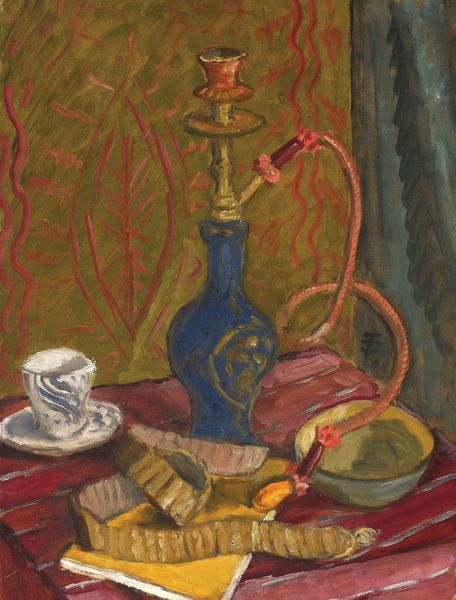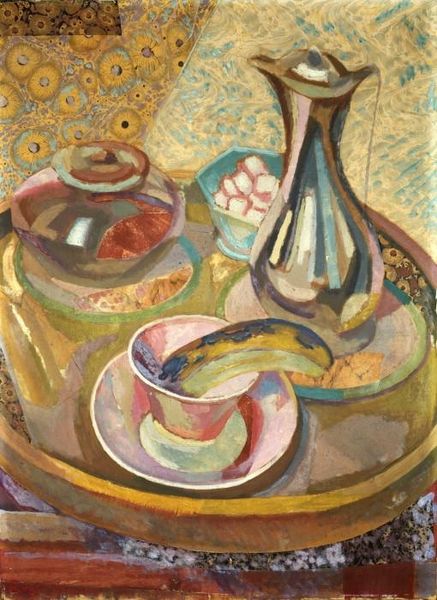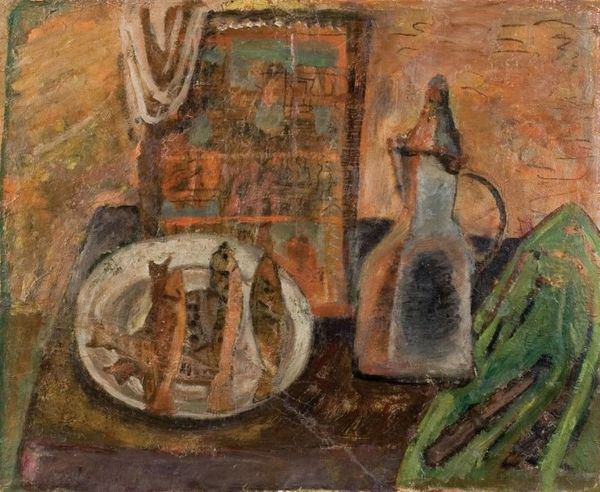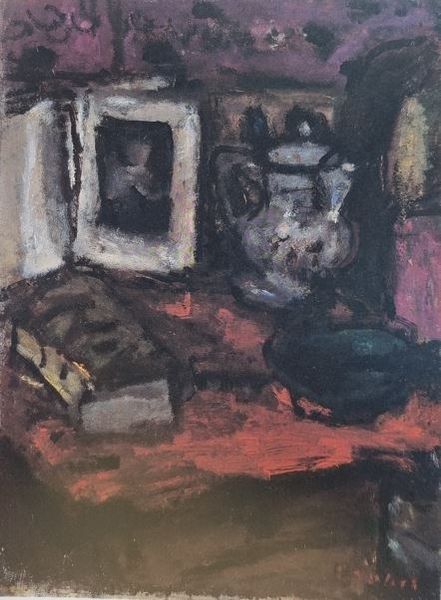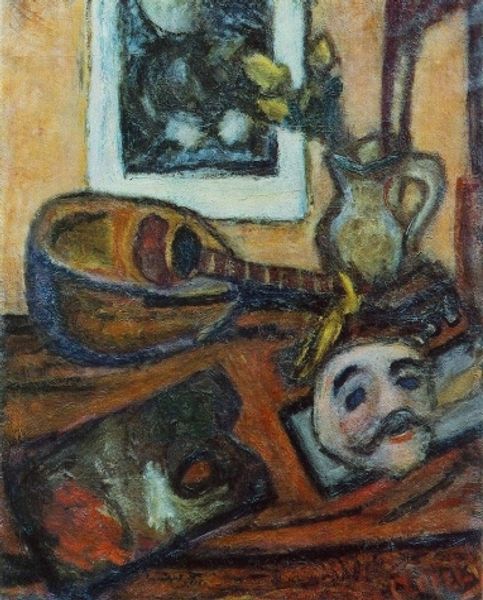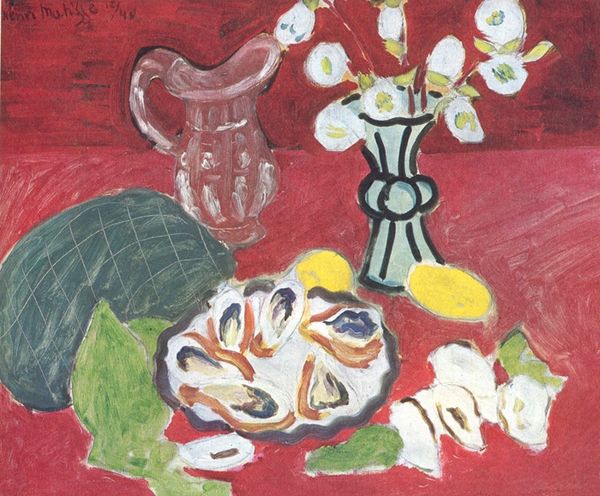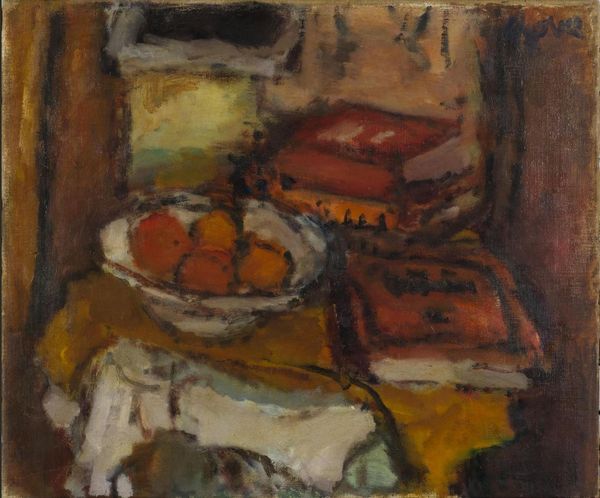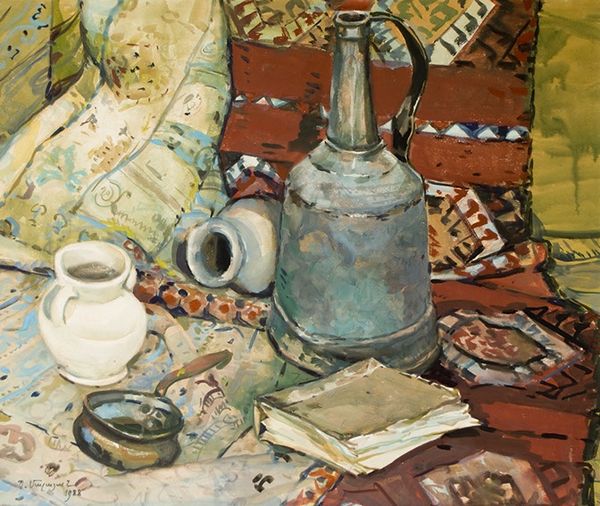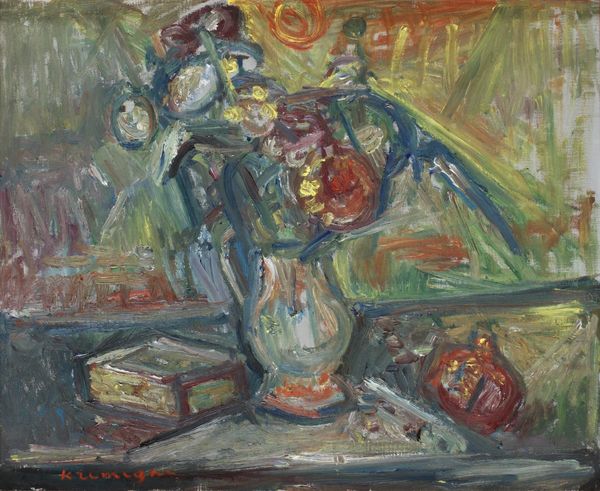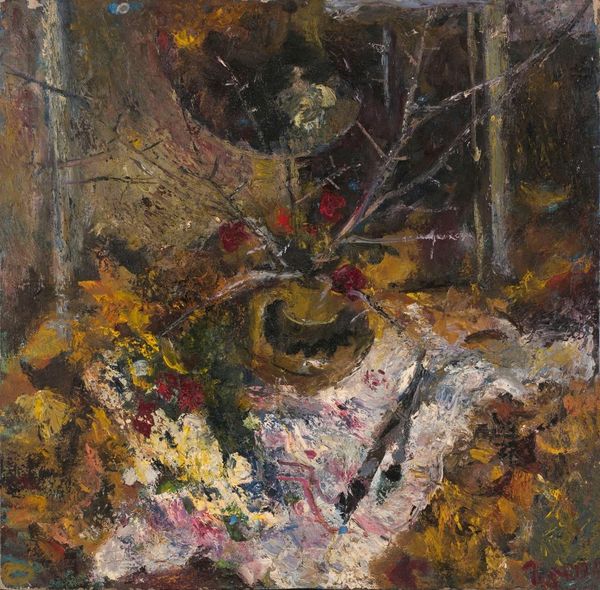
painting, oil-paint, photography
#
still-life
#
painting
#
oil-paint
#
photography
#
oil painting
#
orientalism
#
realism
Copyright: Theodor Pallady,Fair Use
Curator: Theodor Pallady’s oil painting, "Still Life with Hubble-Bubble and Boxes," immediately grabs your attention with its collection of curiosities. The still life focuses on a table topped with boxes, fruit, and a prominent hubble-bubble pipe. What are your initial impressions? Editor: My immediate reaction is one of quiet contemplation. The muted color palette, leaning towards oranges and creams, gives it a serene, almost dreamlike quality. There's something subtly melancholic about the arrangement. Curator: Absolutely, and the items themselves are rich in symbolism. The hookah, for instance, appears throughout art history. Editor: I agree, and let's not forget the historical context here. This "Orientalist" lens—the term often deployed with considerable historical weight—represents a specific Western fascination with the cultures from the Middle East and North Africa, often viewed through a romanticized or exoticized gaze. The inclusion of a hookah certainly points to this. Curator: Very true. It carries a sense of the "exotic," yet the composition feels almost intimate, domestic. A space of meditative smoking. The pipe itself snakes around in the painting, binding the disparate objects to one another. The fruits look like jewels cast among them. Editor: It makes you wonder what statement Pallady was trying to make. Was it merely an aesthetic interest, or was he trying to engage with this larger socio-political context of orientalism? We must be conscious about ascribing meaning from a current perspective but also attentive to how power and cultural exchange play a role in art like this. Curator: I agree. Ultimately, works like this prompt reflections on cultural appreciation, and the stories we choose to tell ourselves through objects and images. The domestic intimacy softens its edges. Editor: Yes, and thinking about it today—after considering its history and cultural meanings—hopefully allows us a chance to reflect on these things outside the aesthetic pleasure we might draw from the still life. Curator: Indeed, it encourages us to unravel those threads between what attracts us on the surface, and the histories humming below.
Comments
No comments
Be the first to comment and join the conversation on the ultimate creative platform.
